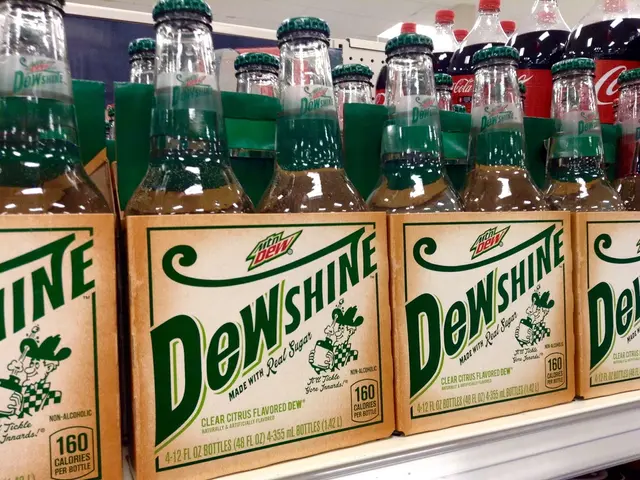Differentiation between Age Spots and Skin Cancer: Identifying the Signs
Growing older can bring about unwanted changes on the skin, such as age spots. While they might look like skin cancer or precancerous growths, fear not! Most age spots are harmless and require no treatment.
Exposure to the sun's rays plays a significant role in both age spots and skin cancer. They both tend to appear on areas usually exposed to sunlight, such as the hands, face, and shoulders. Understanding their differences will help you understand when you may need to seek medical advice.
Spot the Differences
Age spots and skin cancer share some similarities, but key differences can help you identify them.
Age Spots
Age Spots, often called solar lentigines or liver spots, are small patches that seem darker than the surrounding skin. They're usually flat, smooth, and don't itch or feel crusty. Age spots crop up as your body generates more melanin to protect your skin from UV radiation, causing your skin to darken.
Light skin is more susceptible to age spots, though they can develop on any skin tone. They typically appear after middle age.
Skin Cancer
Skin cancer is a genuine health concern. Like age spots, skin cancer is most common on sun-exposed areas, thanks to UV radiation damage from the sun or tanning beds.
Skin cancer occurs when skin cells are damaged, causing them to mutate, develop rapidly, and potentially spread to other parts of the body. Unlike age spots, skin cancer poses a threat.
The most common types of skin cancer are:
- basal cell carcinoma
- squamous cell carcinoma
- melanoma (the most dangerous type)
Another mark that might resemble an age spot is actinic keratosis. Actinic keratosis is a precancerous growth that arises from UV radiation damage.
Can Age Spots Turn into Cancer?
Say goodbye to worries about age spots turning into cancer. Age spots cannot develop into cancer. However, actinic keratosis, looking much like an age spot, is a precancerous growth that might turn into cancer if left untreated.
Comparing Symptoms
Here's a rundown of the main differences in symptoms between age spots and skin cancer:
Age Spot Symptoms
- Flat and smooth
- Yellow, brown, or gray
- Clearly defined with sharp borders
- Small to large, from a few millimeters to several centimeters
- Found on sun-exposed areas
Skin Cancer Symptoms
- Irregular appearance
- Various colors
- Growths feeling rough, crusty, or scaly
- Sores that do not heal
- Pain, itching, oozing, or bleeding
When to Consult a Doctor
Generally, you should reach out to a health professional if you notice any changes to your skin that are out of the ordinary for you. Diagnosing skin cancer early makes treatment easier and improves health outcomes. Speak with a doctor if a mark on your skin:
- Changes in color, shape, or size
- Doesn’t match other marks on your skin
- Itches, crusts over, or bleeds and doesn’t heal within four weeks
Diagnosis and Treatment
A doctor or dermatologist can diagnose age spots by visually examining the spot. If they suspect something else, such as skin cancer or actinic keratosis, they may perform a skin biopsy to confirm their suspicions.
Treatment for age spots is optional since they pose no health risks, but some people opt to remove or reduce their appearance. Various treatments, like creams, chemical peels, and laser therapy, can help with this.
Skin cancer treatment depends on the type and stage of cancer, but removal through surgery is the primary method for early-stage skin cancer. More aggressive treatments like chemotherapy or radiation therapy may be required for later stages.
In conclusion, age spots, skin cancer, and actinic keratosis might look similar, but they can be distinguished. Keep an eye on any changes to your skin, and consult a doctor if you notice anything out of the ordinary. Early skin cancer detection and treatment mean improved health outcomes.
- Some seniors may develop a skin condition called melanoma, which is a dangerous type of skin cancer that requires immediate medical attention.
- A visit to a dermatologist would be beneficial for seniors who are concerned about skin conditions, as they can provide guidance on various health-and-wellness issues, including skin care and skin-conditions like skin cancer.
- The science behind oncology and dermatology has made significant strides in understanding and treating various medical-conditions, such as skin cancer, ensuring healthier futures for seniors and others.
- Importantly, understanding the differences between age spots and skin cancer is crucial, as age spots are commonly mistaken for other skin cancer types like melanoma, but they are generally harmless and require no treatment.
- Maintaining proper skin-care routines, including sun protection and regular skincare checks, is essential for reducing the risk of skin cancer and other skin-conditions in seniors and others.








